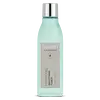What's inside
What's inside
 Key Ingredients
Key Ingredients

 Benefits
Benefits

 Concerns
Concerns

 Ingredients Side-by-side
Ingredients Side-by-side

Water
Skin ConditioningButylene Glycol
HumectantPropanediol
SolventGlycerin
HumectantSalvia Hispanica Seed Extract
EmollientSodium Citrate
BufferingChlorphenesin
AntimicrobialHydrolyzed Oats
Skin ConditioningDisodium EDTA
Acetyl Glucosamine
Skin ConditioningCeteth-20
CleansingCitric Acid
BufferingCitrullus Lanatus Fruit Extract
Skin ConditioningDipotassium Glycyrrhizate
HumectantMalpighia Emarginata Fruit Extract
Skin ConditioningLens Esculenta Fruit Extract
Skin ConditioningPyrus Malus Fruit Extract
Skin ConditioningLactobacillus Ferment
Skin ConditioningSodium Hyaluronate
HumectantParfum
MaskingSodium Lactate
BufferingPhenoxyethanol
PreservativeSodium Benzoate
MaskingXanthan Gum
EmulsifyingLecithin
EmollientPotassium Sorbate
PreservativeGluconolactone
Skin ConditioningSodium PCA
HumectantGlyceryl Acrylate/Acrylic Acid Copolymer
HumectantPvm/Ma Copolymer
Emulsion StabilisingSalvia Hispanica Seed Oil
MoisturisingCarrageenan
Glucose
HumectantCeramide NP
Skin ConditioningBeta-Sitosterol
Emulsion StabilisingOenothera Biennis Oil
EmollientPerilla Ocymoides Seed Oil
Skin ConditioningTocopherol
AntioxidantGlycine Soja Oil
EmollientBHT
AntioxidantHelianthus Annuus Seed Oil
EmollientHexyl Cinnamal
PerfumingLimonene
PerfumingWater, Butylene Glycol, Propanediol, Glycerin, Salvia Hispanica Seed Extract, Sodium Citrate, Chlorphenesin, Hydrolyzed Oats, Disodium EDTA, Acetyl Glucosamine, Ceteth-20, Citric Acid, Citrullus Lanatus Fruit Extract, Dipotassium Glycyrrhizate, Malpighia Emarginata Fruit Extract, Lens Esculenta Fruit Extract, Pyrus Malus Fruit Extract, Lactobacillus Ferment, Sodium Hyaluronate, Parfum, Sodium Lactate, Phenoxyethanol, Sodium Benzoate, Xanthan Gum, Lecithin, Potassium Sorbate, Gluconolactone, Sodium PCA, Glyceryl Acrylate/Acrylic Acid Copolymer, Pvm/Ma Copolymer, Salvia Hispanica Seed Oil, Carrageenan, Glucose, Ceramide NP, Beta-Sitosterol, Oenothera Biennis Oil, Perilla Ocymoides Seed Oil, Tocopherol, Glycine Soja Oil, BHT, Helianthus Annuus Seed Oil, Hexyl Cinnamal, Limonene
Water
Skin ConditioningLactic Acid
BufferingCitric Acid
BufferingGlycerin
HumectantAloe Barbadensis Leaf Juice
Skin ConditioningHydrastis Canadensis Extract
MaskingCucumis Sativus Fruit Extract
EmollientSalvia Officinalis Leaf Extract
CleansingCalendula Officinalis Flower Extract
MaskingArctium Lappa Root Extract
Skin ConditioningPaullinia Cupana Seed Extract
Skin ConditioningHedera Helix Leaf/Stem Extract
AntimicrobialTetrasodium EDTA
Water, Lactic Acid, Citric Acid, Glycerin, Aloe Barbadensis Leaf Juice, Hydrastis Canadensis Extract, Cucumis Sativus Fruit Extract, Salvia Officinalis Leaf Extract, Calendula Officinalis Flower Extract, Arctium Lappa Root Extract, Paullinia Cupana Seed Extract, Hedera Helix Leaf/Stem Extract, Tetrasodium EDTA
Ingredients Explained
These ingredients are found in both products.
Ingredients higher up in an ingredient list are typically present in a larger amount.
Citric Acid is an alpha hydroxy acid (AHA) naturally found in citrus fruits like oranges, lemons, and limes.
Like other AHAs, citric acid can exfoliate skin by breaking down the bonds that hold dead skin cells together. This helps reveal smoother and brighter skin underneath.
However, this exfoliating effect only happens at high concentrations (20%) which can be hard to find in cosmetic products.
Due to this, citric acid is usually included in small amounts as a pH adjuster. This helps keep products slightly more acidic and compatible with skin's natural pH.
In skincare formulas, citric acid can:
While it can provide some skin benefits, research shows lactic acid and glycolic acid are generally more effective and less irritating exfoliants.
Most citric acid used in skincare today is made by fermenting sugars (usually from molasses). This synthetic version is identical to the natural citrus form but easier to stabilize and use in formulations.
Read more about some other popular AHA's here:
Learn more about Citric AcidGlycerin is already naturally found in your skin. It helps moisturize and protect your skin.
A study from 2016 found glycerin to be more effective as a humectant than AHAs and hyaluronic acid.
As a humectant, it helps the skin stay hydrated by pulling moisture to your skin. The low molecular weight of glycerin allows it to pull moisture into the deeper layers of your skin.
Hydrated skin improves your skin barrier; Your skin barrier helps protect against irritants and bacteria.
Glycerin has also been found to have antimicrobial and antiviral properties. Due to these properties, glycerin is often used in wound and burn treatments.
In cosmetics, glycerin is usually derived from plants such as soybean or palm. However, it can also be sourced from animals, such as tallow or animal fat.
This ingredient is organic, colorless, odorless, and non-toxic.
Glycerin is the name for this ingredient in American English. British English uses Glycerol/Glycerine.
Learn more about GlycerinWater. It's the most common cosmetic ingredient of all. You'll usually see it at the top of ingredient lists, meaning that it makes up the largest part of the product.
So why is it so popular? Water most often acts as a solvent - this means that it helps dissolve other ingredients into the formulation.
You'll also recognize water as that liquid we all need to stay alive. If you see this, drink a glass of water. Stay hydrated!
Learn more about Water